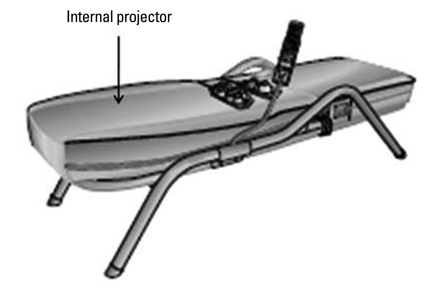Yonsei Med J.
2011 Nov;52(6):982-989. 10.3349/ymj.2011.52.6.982.
The Effects of Heat and Massage Application on Autonomic Nervous System
- Affiliations
-
- 1Department of Rehabilitation Medicine, Wonju Christian Hospital, Yonsei University Wonju College of Medicine, Wonju, Korea. kimrehab@yonsei.ac.kr
- KMID: 1058820
- DOI: http://doi.org/10.3349/ymj.2011.52.6.982
Abstract
- PURPOSE
The objective of this study is to evaluate the effects of heat and massage application on autonomic nervous system.
MATERIALS AND METHODS
One hundred thirty-nine subjects volunteered and completed this study. Heat and massage was daily applied for 40 minutes, 5 days a week for 2 weeks. Primary-dependent measures included heart rate variability, sympathetic skin response, and serum cortisol and norepinephrine levels.
RESULTS
Serum cortisol levels were significantly decreased at 2 weeks compared to baseline (p=0.003). Plasma norepinephrine levels at 4 weeks were significantly decreased compared to baseline (p=0.010). Heart rate, using the power spectra, increased significantly after 2 weeks compared to baseline. Of autonomic nerve conduction measures, latency was significantly increased at 2 and 4 weeks compared to baseline (p=0.023, 0.012), and amplitude was significantly decreased at 4 weeks compared to baseline (p=0.008). There were no serious adverse events such as burns or other major complications.
CONCLUSION
The results of this study suggest that heat and massage applications provide relaxation to the autonomic nervous system without serious adverse events.
MeSH Terms
Figure
Reference
-
1. Min SK. Modern Psychiatry. 1999. 4th ed. Seoul: Ilchokak.2. Ahn PJ, Chang BH, Choi JW. Evaluation of wear sensation with garment of Far Infrared ray radiation fabric at office in summer. J Korean Soc Living Environ Syst. 1997. 4:47–56.3. Moraska A, Pollini RA, Boulanger K, Brooks MZ, Teitlebaum L. Physiological adjustments to stress measures following massage therapy: a review of the literature. Evid Based Complement Alternat Med. 2010. 7:409–418.
Article4. Diego MA, Field T. Moderate pressure massage elicits a parasympathetic nervous system response. Int J Neurosci. 2009. 119:630–638.
Article5. Uvnäs-Moberg K. Oxytocin may mediate the benefits of positive social interaction and emotions. Psychoneuroendocrinology. 1998. 23:819–835.
Article6. Parati G, Saul JP, Di Rienzo M, Mancia G. Spectral analysis of blood pressure and heart rate variability in evaluating cardiovascular regulation. A critical appraisal. Hypertension. 1995. 25:1276–1286.
Article7. Kim SH, Kim HT, Kim JH, Chung KC, Kim MH. The relationship between hemispheric lesion and autonomic function by using beat-to-beat heart rate variation. J Korean Neurol Assoc. 1988. 6:49–54.8. Shin JB, Chon JS, Ha KH, Chun SI. The habituation phenomenon of sympathetic skin response. J Korean Acad Rehabil Med. 1991. 15:40–46.9. Korpelainen JT, Sotaniemi KA, Suominen K, Tolonen U, Myllylä VV. Cardiovascular autonomic reflexes in brain infarction. Stroke. 1994. 25:787–792.
Article10. Pieper SJ, Hammill SC. Heart rate variability: technique and investigational applications in cardiovascular medicine. Mayo Clin Proc. 1995. 70:955–964.
Article11. Cowan MJ. Measurement of heart rate variability. West J Nurs Res. 1995. 17:32–48.
Article12. Kamath MV, Fallen EL. Power spectral analysis of heart rate variability: a noninvasive signature of cardiac autonomic function. Crit Rev Biomed Eng. 1993. 21:245–311.13. Montagna P, Liguori R, Zappia M. Sympathetic skin response. J Neurol Neurosurg Psychiatry. 1985. 48:489–490.
Article14. Montano N, Ruscone TG, Porta A, Lombardi F, Pagani M, Malliani A. Power spectrum analysis of heart rate variability to assess the changes in sympathovagal balance during graded orthostatic tilt. Circulation. 1994. 90:1826–1831.
Article15. Kamalesh M, Burger AJ, Kumar S, Nesto R. Reproducibility of time and frequency domain analysis of heart rate variability in patients with chronic stable angina. Pacing Clin Electrophysiol. 1995. 18:1991–1994.
Article16. Vardas P, Kochiadakis G, Orfanakis A, Kalaitzakis M, Manios E. Intraindividual reproducibility of heart rate variability before and during postural tilt in patients with syncope of unknown origin. Pacing Clin Electrophysiol. 1994. 17:2207–2210.
Article17. Malliani A, Lombardi F, Pagani M. Power spectrum analysis of heart rate variability: a tool to explore neural regulatory mechanisms. Br Heart J. 1994. 71:1–2.
Article18. Stein PK, Bosner MS, Kleiger RE, Conger BM. Heart rate variability: a measure of cardiac autonomic tone. Am Heart J. 1994. 127:1376–1381.
Article19. Akselrod S, Gordon D, Ubel FA, Shannon DC, Berger AC, Cohen RJ. Power spectrum analysis of heart rate fluctuation: a quantitative probe of beat-to-beat cardiovascular control. Science. 1981. 213:220–222.
Article20. Burke JH, Goldberger JJ, Ehlert FA, Kruse JT, Parker MA, Kadish AH. Gender differences in heart rate before and after autonomic blockade: evidence against an intrinsic gender effect. Am J Med. 1996. 100:537–543.
Article21. Hedman AE, Tahvanainen KU, Hartikainen JE, Hakumäki MO. Effect of sympathetic modulation and sympatho-vagal interaction on heart rate variability in anaesthetized dogs. Acta Physiol Scand. 1995. 155:205–214.
Article22. Jaffe RS, Fung DL, Behrman KH. Optimal frequency ranges for extracting information on autonomic activity from the heart rate spectrogram. J Auton Nerv Syst. 1994. 46:37–46.
Article23. Takalo R, Korhonen I, Turjanmaa V, Majahalme S, Tuomisto M, Uusitalo A. Short-term variability of blood pressure and heart rate in borderline and mildly hypertensive subjects. Hypertension. 1994. 23:18–24.
Article24. Rollins MD, Jenkins JG, Carson DJ, McClure BG, Mitchell RH, Imam SZ. Power spectral analysis of the electrocardiogram in diabetic children. Diabetologia. 1992. 35:452–455.
Article25. Day TJ, Offerman D, Bajada S. Peripheral sympathetic conduction velocity calculated from surface potentials. Clin Exp Neurol. 1986. 22:41–46.
Article26. Fagius J. Aspects of autonomic neurophysiology in diabetic polyneuropathy: a brief review. Diabet Med. 1991. 8(Spec No):S58–S62.
Article27. Knezevic W, Bajada S. Peripheral autonomic surface potential. A quantitative technique for recording sympathetic conduction in man. J Neurol Sci. 1985. 67:239–251.28. Aisen ML, Stallman J. The sympathetic skin response in quadriplegia. J Neurol Rehabil. 1955. 9:1–5.
Article29. Brown VM, Wang GH. Changes in galvanic skin reflex after acute spinal transection in normal and decerebrate cats. J Neurophysiol. 1956. 19:446–451.
Article30. Elie B, Louboutin JP. Sympathetic skin response (SSR) is abnormal in multiple sclerosis. Muscle Nerve. 1995. 18:185–189.
Article31. Shahani BT, Halperin JJ, Boulu P, Cohen J. Sympathetic skin response--a method of assessing unmyelinated axon dysfunction in peripheral neuropathies. J Neurol Neurosurg Psychiatry. 1984. 47:536–542.
Article32. Zimmermann KP, Monga TN, Darouiche RO, Lawrence SA. Post-stroke autonomic nervous system function: palmar sympathetic skin responses thirty or more days after cerebrovascular accident. Arch Phys Med Rehabil. 1995. 76:250–256.
Article33. Mohan A, Sharma R, Bijlani RL. Effect of meditation on stress-induced changes in cognitive functions. J Altern Complement Med. 2011. 17:207–212.
Article34. Lee KN. Clinical Pathology file. 1993. 2nd ed. Seoul: Korea Clinical Laboratories.
- Full Text Links
- Actions
-
Cited
- CITED
-
- Close
- Share
- Similar articles
-
- Autonomic Nervous System and Autonomic Drugs in the Ophthalmic Field Part II: Autonomic Drugs in the Ophthalmic Field
- Effects of Qi Hand Reflexology on Autonomic Nervous System Activity and Physical Resistance to Stress in Inpatients
- Effects of Laughing and Music Therapy on Depression and Activities of the Autonomic Nervous System in the Elderly with Dementia
- Interaction of Autonomic and Vestibular System
- A Critical Review on the Argument that the Sacral Division of the Autonomic Nervous System should be Classified as the Sympathetic Nervous System






